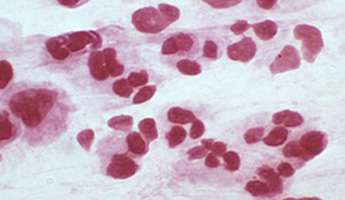Europe sees constant increase in gonorrhoea infections

Since 2008, the overall rate of reported gonorrhoea infections has more than doubled across Europe, going up from 8 per 100 000 population to 20 cases per 100 000 persons in 2014.
In total, 66 413 gonorrhoea cases were reported in 27 countries of the European Union and European Economic Area (EU/EEA) in 2014 - which constitutes an increase of 25% compared with 2013. The highest rates were observed in the United Kingdom (60 per 100 000), Ireland (28), Denmark (20) and Latvia (18). The majority of gonorrhoea infections were diagnosed among young adults aged 15-24 years who accounted for 38% of cases; followed by the 25-34-year-olds (34%).
Looking at ways of transmission, almost half (44%) of the reported gonorrhoea diagnoses in the EU/EEA in 2014 were reported to be among men who have sex with men (MSM). This is only slightly lower than the proportion of male and female heterosexuals combined (49%).
Rise in gonorrhoea cases among women
In 2014, for the first time since ECDC started collecting this data (2010), the number of cases among women was higher than the number of cases among heterosexual men.
Given the risk of reproductive tract complications, e.g. pelvic inflammatory disease or, if untreated, infertility, as well as possible transmission from mother to child, this trend among women is of particular concern.
![Between 2008 and 2014, the overall rate of reported gonorrhea infections has more than doubled across Europe, going up from 8 per 100,000 population to 20 cases per 100,000 persons. Credit: European Centre for Disease Prevention and Control. Annual Epidemiological Report 2016 - Gonorrhoea. [Internet]. Stockholm: ECDC; 2016. Europe sees constant increase in gonorrhoea infections](https://scx1.b-cdn.net/csz/news/800a/2016/europeseesco.jpg)
A threat for treatment success: drug-resistant gonococci
The European treatment guidelines for gonorrhoea recommend use of two antimicrobials (ceftriaxone or cefixime together with azithromycin). The latest resistance data from the European Gonococcal Antimicrobial Surveillance Programme suggest stable levels of drug resistance to cefixime, and no significant increase in resistance to another key drug (ceftriaxone).
Resistance to azithromycin, however, appears to be increasing and the effectiveness of this recommended dual treatment might be under threat if resistance to third-generation cephalosporins (cefixime and ceftriaxone) also starts to increase again. As the control of gonorrhoea depends on effective antimicrobial treatment, even a small increase in drug resistance has a huge impact due to the risk of treatment failure.
The rising trend in the number of reported of gonorrhoea cases points at on-going condomless sex that also heightens the risk of transmission of other sexually transmitted infections, including HIV (11% of those infected with gonorrhoea were co-infected with HIV). The increasing number of cases among MSM highlight the need to further strengthen prevention activities which target specific groups by using effective, evidence-based messages and methods.
More information: ecdc.europa.eu/en/healthtopics … cal-Report-2016.aspx


















